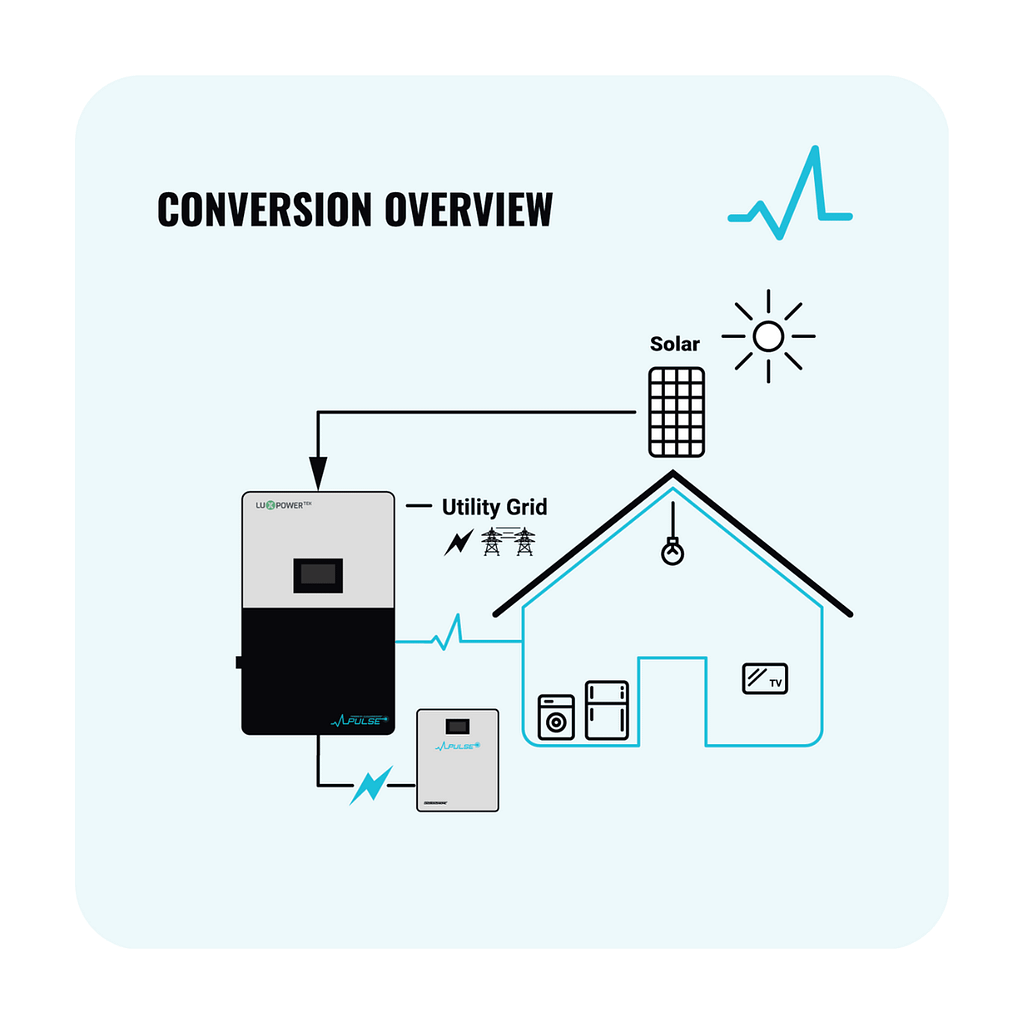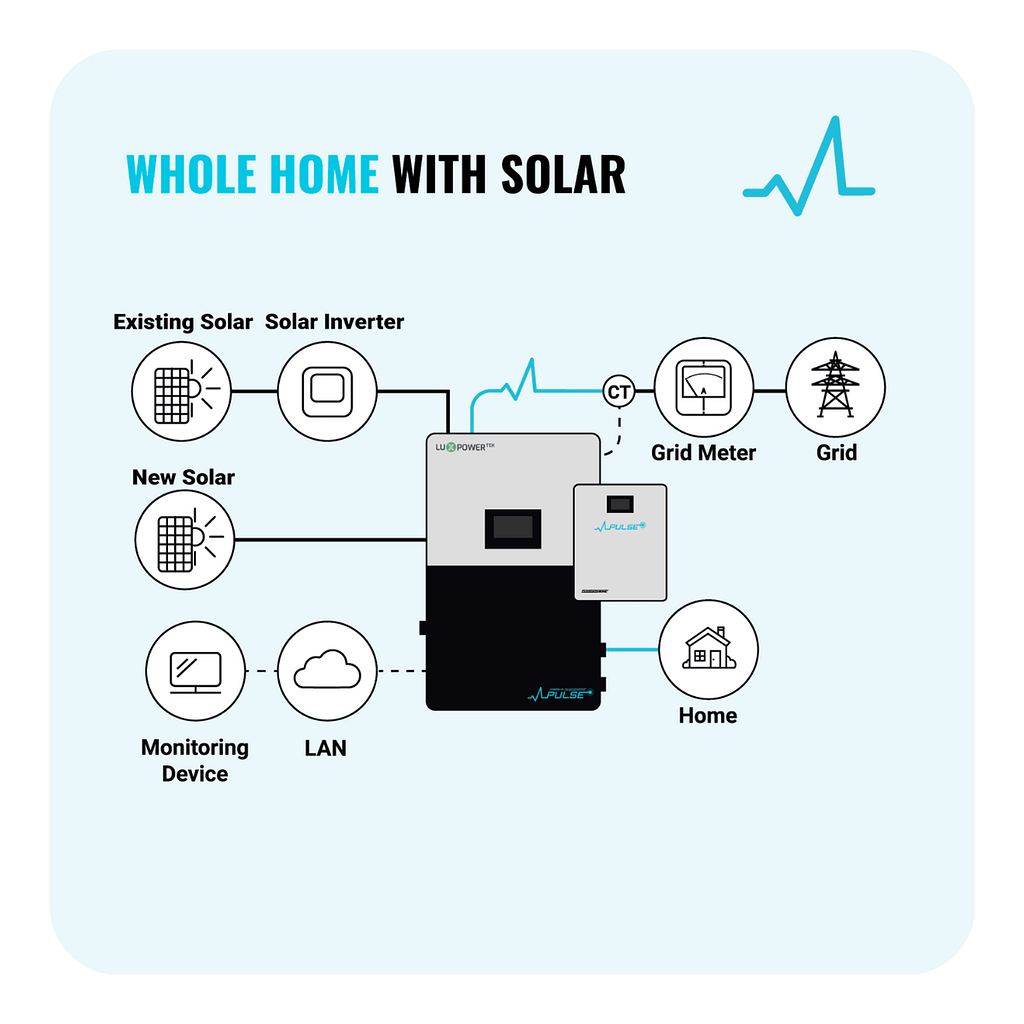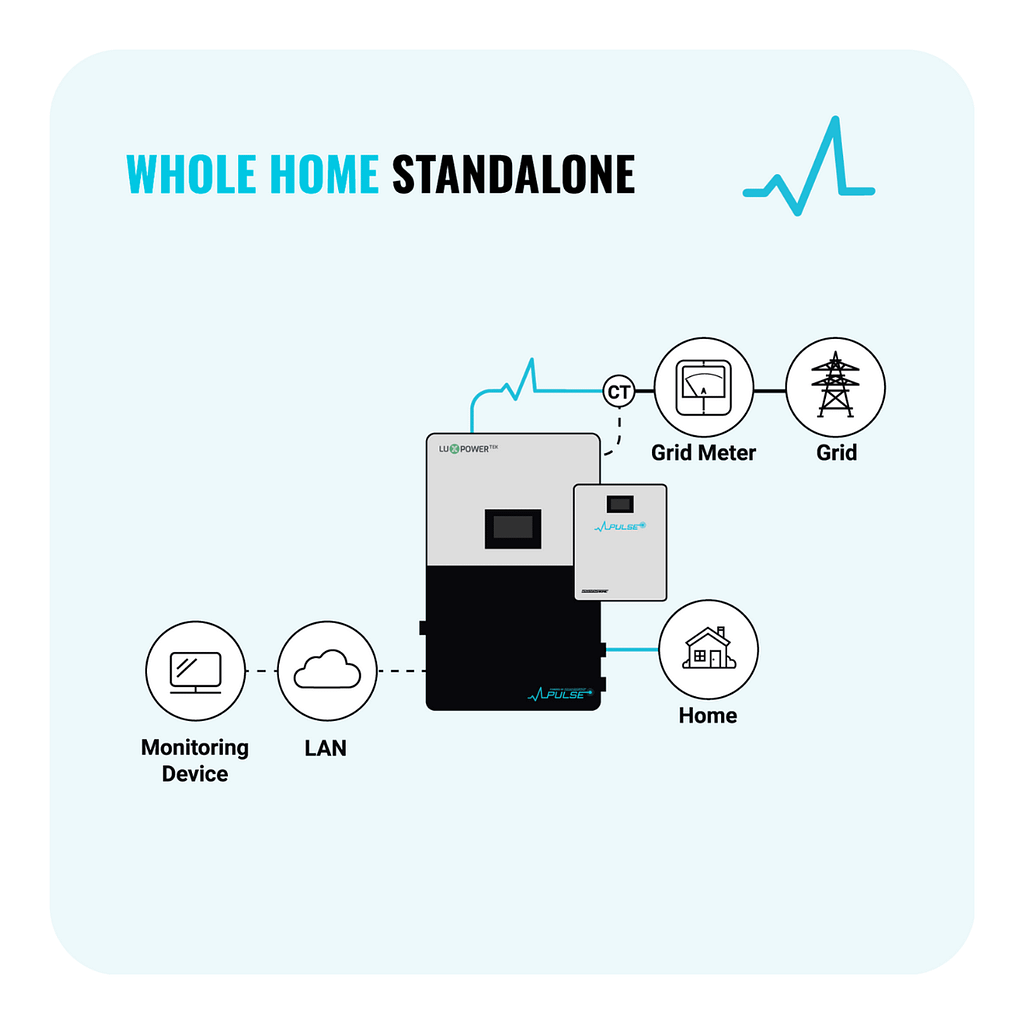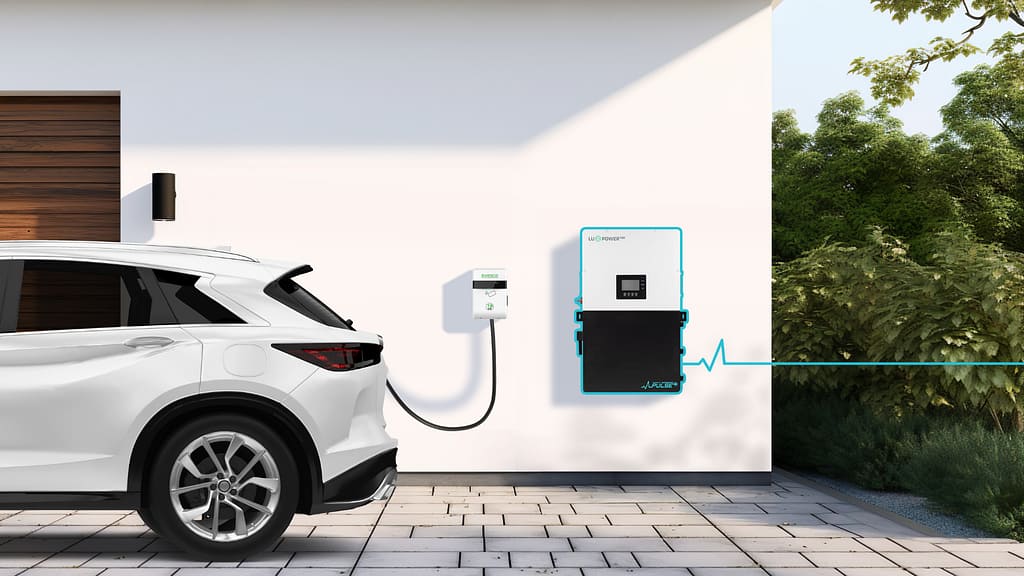This post was originally published on Power Sonic
Welcome to the future of battery energy storage, with the Power Sonic Pulse. The Power Sonic Pulse series offers two unique battery energy storage models, allowing you to choose what to power. Whether you’re looking to power critical circuits, off-grid applications, or aiming to power your entire home, the Pulse series has a solution tailored to fit your needs. In this blog, we dive into everything you need to know about the Pulse Whole Home system- a comprehensive scalable solution for users looking to redefine energy consumption.
WHAT IS THE POWER SONIC PULSE WHOLE HOME?
The Power Sonic Pulse Whole Home is a modular, universal wall-mounted system offering storage capacities from 5 kWh to 75 kWh.
It features an integrated inverter and expandable battery packs to meet your power requirements. This system is designed to power your entire house and can also be used for light commercial applications, such as a small office.
Pulse Whole Home Provides Reliable Backup Power
The Power Sonic Pulse Whole Home system ensures an uninterrupted power supply, seamlessly transitioning from grid power to backup power without any noticeable interruption.
Its robust energy storage capabilities provide peace of mind during outages, ensuring that your essential appliances and systems remain operational.
Pulse Whole Home Beyond Backup Power
The Power Sonic Pulse Whole Home is more than just a backup solution; it transforms how you manage your energy consumption. Revolutionize your energy strategy by choosing when to use stored energy, when to sell excess energy back to the grid, and more. Here are some examples of how the Whole Home model can facilitate smart energy usage:
- Peak Shaving: Peak shaving is a smart energy management strategy employed by battery energy storage systems like the Pulse Whole Home. Users can easily program the system to operate automatically by inputting peak electricity hours from their energy bill. Pulse works autonomously to store excess energy during off-peak hours or when renewable sources like solar are generating surplus power. When peak demand periods occur, the system automatically discharges stored energy to replace expensive grid power. This operation not only reduces reliance on costly peak-time electricity but also contributes to grid stability and resilience.

- Load Shifting: Pulse helps maximize cost savings and efficiency while supporting grid stability through load shifting. Load shifting optimizes energy consumption by scheduling the use of stored energy to match peak electricity pricing or demand periods, thereby reducing stress on the grid during high-demand times and ensuring reliable power distribution.
- EV Charging: Charge your Pulse batteries when electricity is cheap and then use the stored energy to charge your electric vehicle during periods of expensive electricity. This strategy helps save money and optimizes energy use, enhancing overall efficiency and reducing environmental impact.
TECHNICAL OVERVIEW
- Installation: The Power Sonic Pulse Whole Home is a wall-mountable modular system with an integrated inverter and battery pack. It is installed between the grid and your main breaker panel to power your entire house.
- Conversion Overview: Pulse Whole Home utilizes cutting-edge technology to seamlessly integrate an inverter, battery storage, renewable energy sources, and bidirectional power conversion capability. The system efficiently captures and converts energy from solar panels or the grid into DC power, which is then stored in the battery pack. During periods of high demand or grid outages, the stored energy is discharged through the inverter, converting DC power back into AC power to provide reliable electricity to critical circuits or entire premises. Through advanced energy management algorithms, Pulse optimizes energy usage by intelligently balancing power supply and demand, thereby maximizing cost savings and ensuring uninterrupted power supply for Pulse users.

- Power Capacity: The Power Sonic Pulse Whole Home can support up to 15 wall-mountable batteries for a max capacity of 75 kWh.
PULSE WHOLE HOME WITH AND WITHOUT SOLAR
The Power Sonic Pulse Whole Home system offers flexibility by functioning with or without solar power.
- With Solar: The Whole Home system optimizes solar energy utilization by storing excess solar energy generated during the day for use during periods of low sunlight or high energy demand. This enables you to harness renewable energy sources and gain control over your power consumption.

- Without Solar: When operating without solar power, the Pulse Whole Home system delivers reliable backup power during outages by storing energy from the grid. You can seamlessly access this stored energy during peak demand periods, resulting in substantial cost savings.

WHY THE POWER SONIC PULSE WHOLE HOME?
Uninterrupted Power Supply
The Power Sonic Pulse Whole Home seamlessly integrates into residential setups to provide reliable energy backup during power outages, safeguarding essential appliances and electronics.
Solar Optimization
The Power Sonic Pulse Whole Home optimizes solar energy integration, maximizing its storage and use in both residential and commercial settings. Its intelligent design enhances overall system performance, ensuring uninterrupted energy supply even during low sunlight or peak demand periods. Users can harness more solar energy, reduce reliance on the grid, and promote sustainability with its numerous features and reliable performance.
Programmable and Scheduled Intelligence
The Pulse Whole Home features advanced technology including programmable and scheduled intelligence, allowing users to optimize energy consumption, increase solar use, protect home appliances during grid shortages, and manage energy usage effectively to reduce costs.
Variable Working Modes
The Power Sonic Pulse Whole Home offers flexible energy optimization through various working modes tailored to specific needs:
- Self-consumption mode prioritizes using solar energy for household loads, with excess stored in batteries for later use or sale into the grid. This mode ensures efficient energy management under varying conditions.
- Force charge & discharge mode allows users to manually control when the battery charges or discharges.
- Charge first mode uses solar energy first to charge the battery, then powers household loads, and finally exports excess energy to the grid. Ideal for areas with unstable grid power supply, this mode ensures the battery is always full.
For more details about the Power Sonic Pulse, please visit our website. If the Whole Home Solution doesn’t match your energy requirements, explore the Pulse All-In-One in our latest blog post.




0 Comments